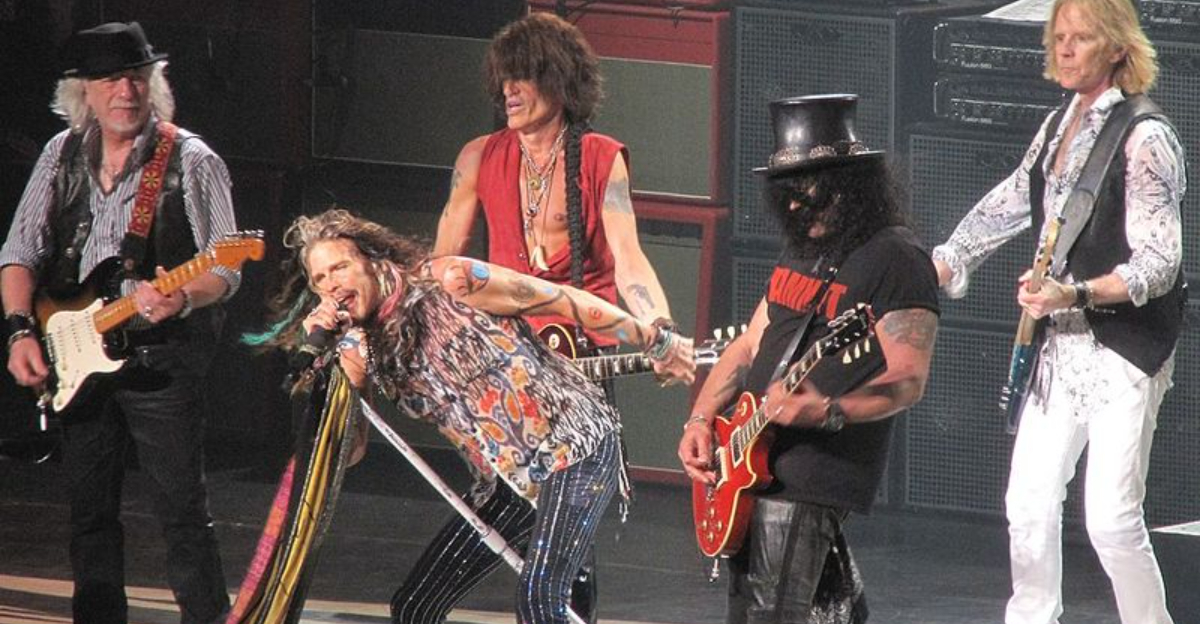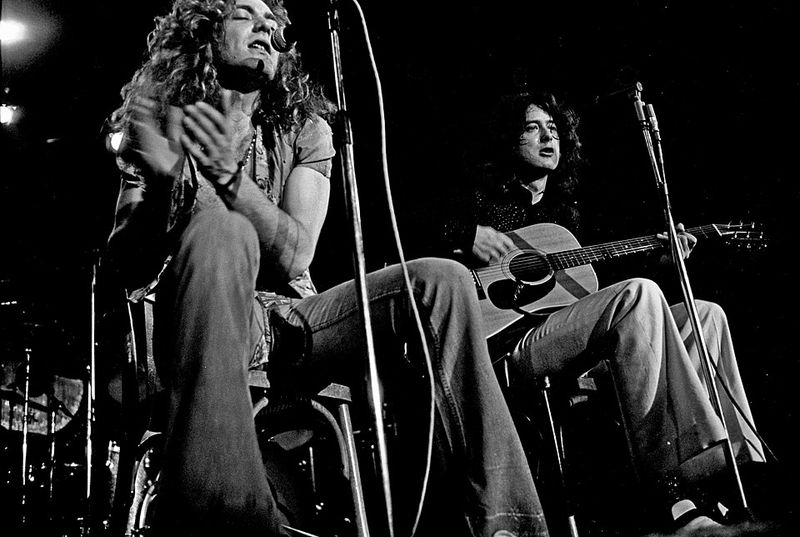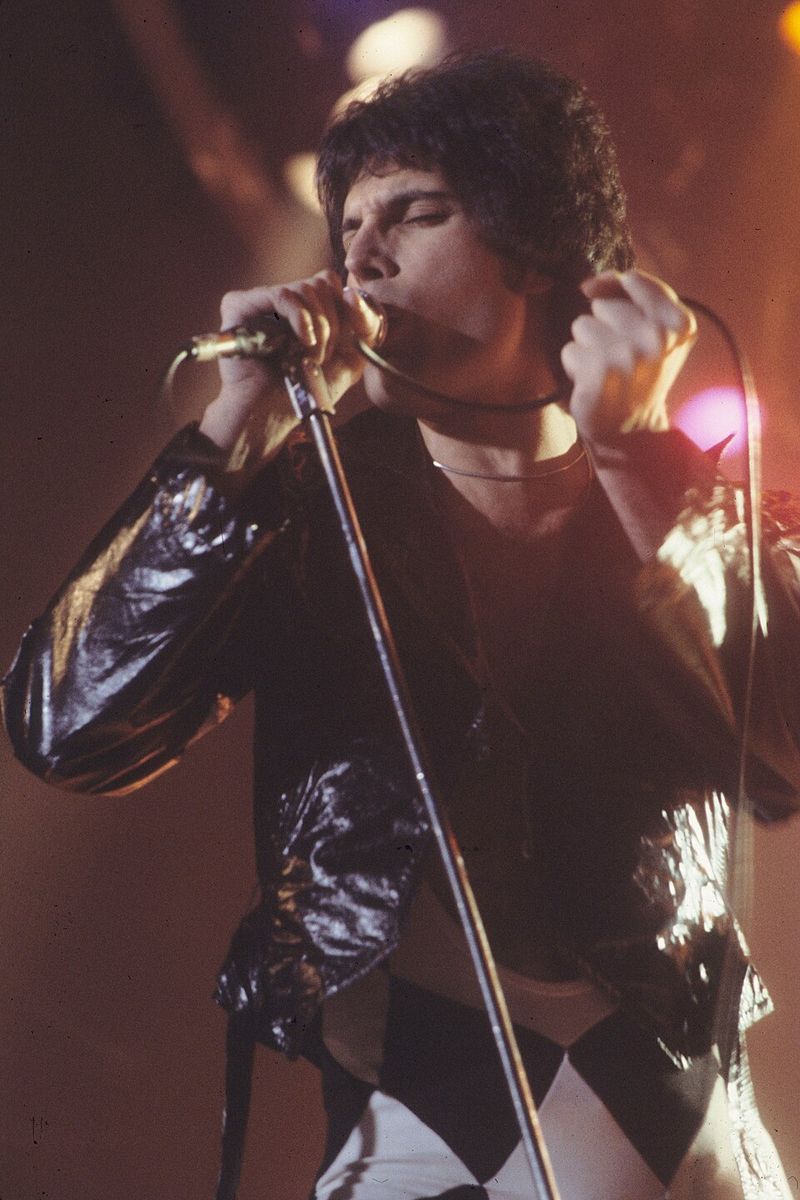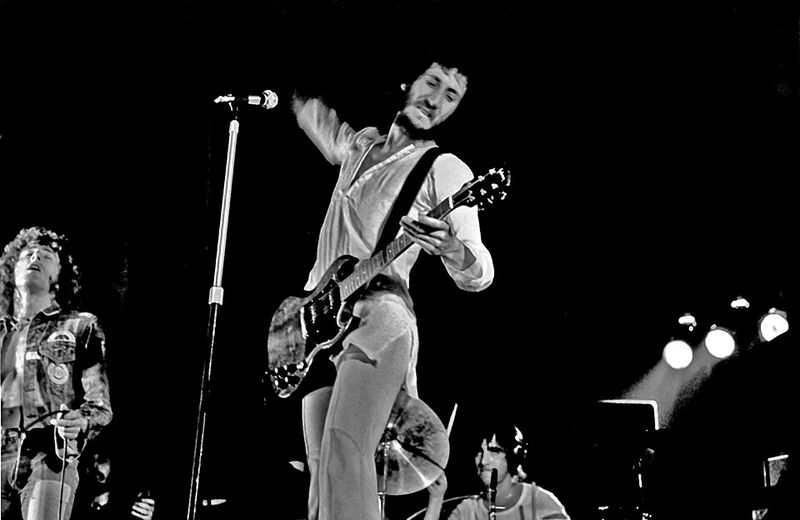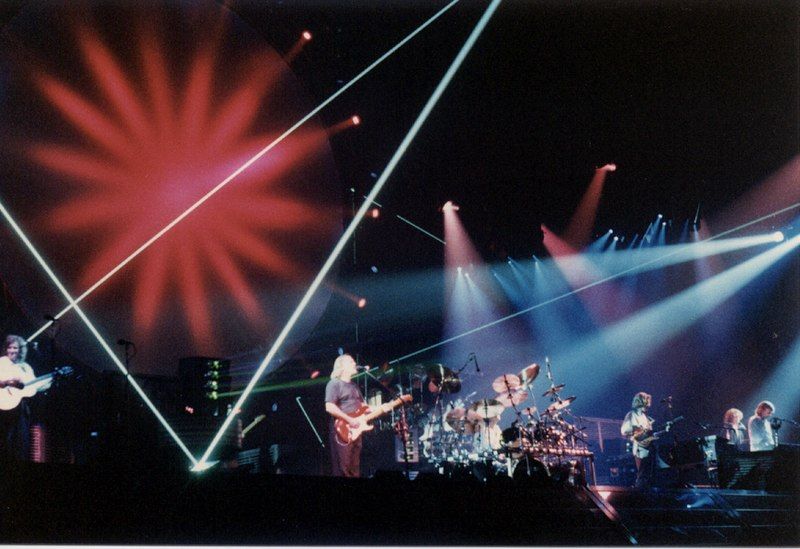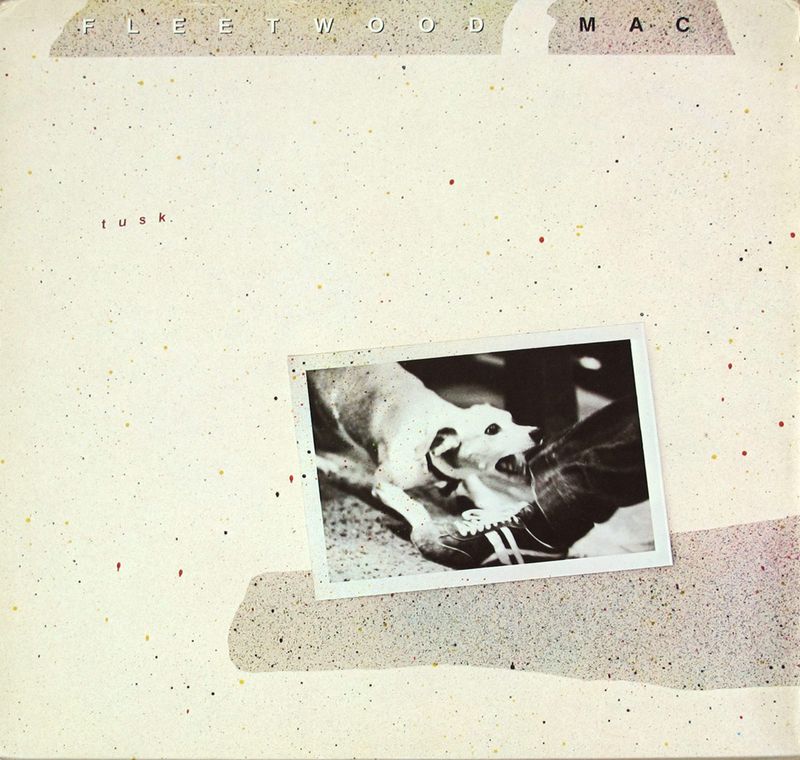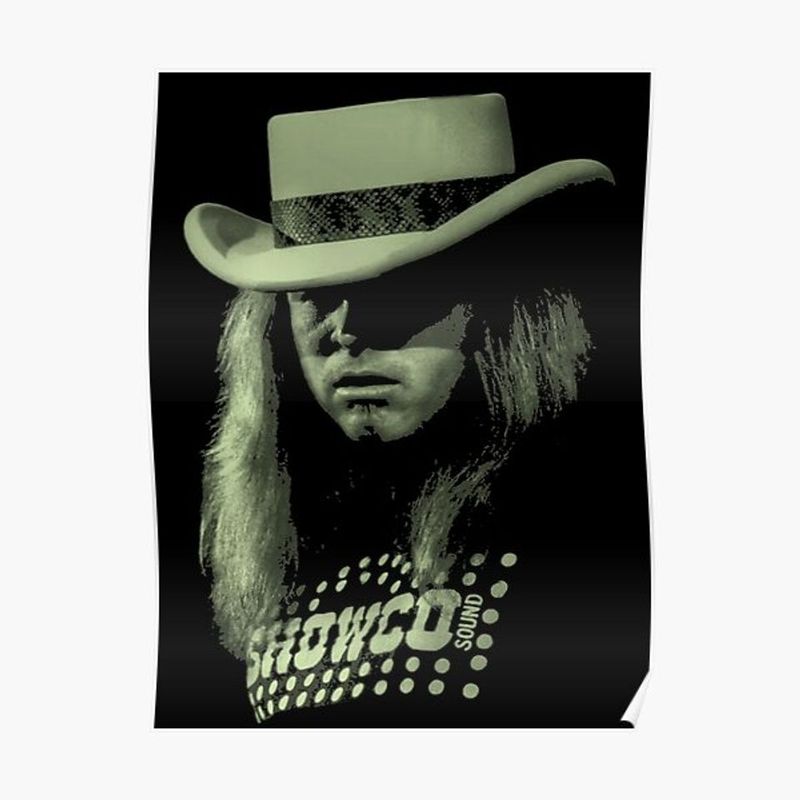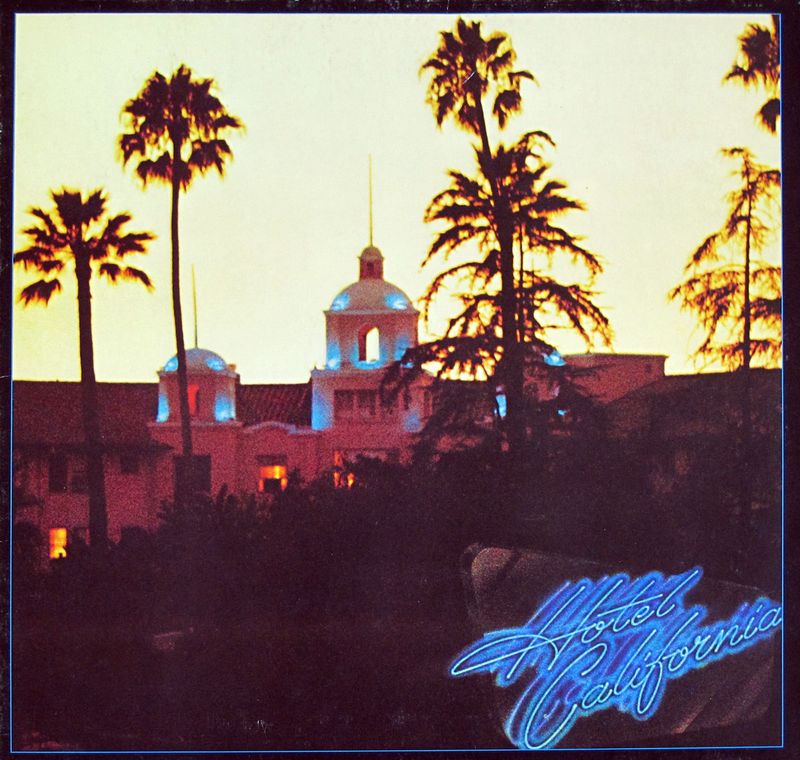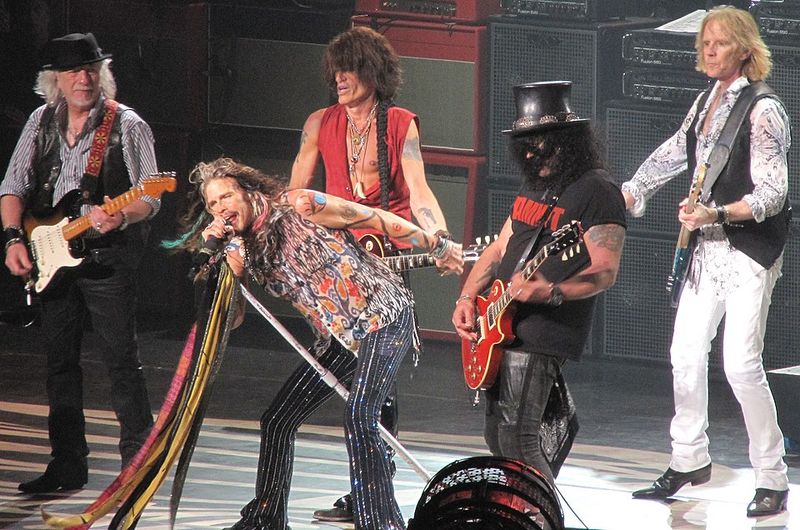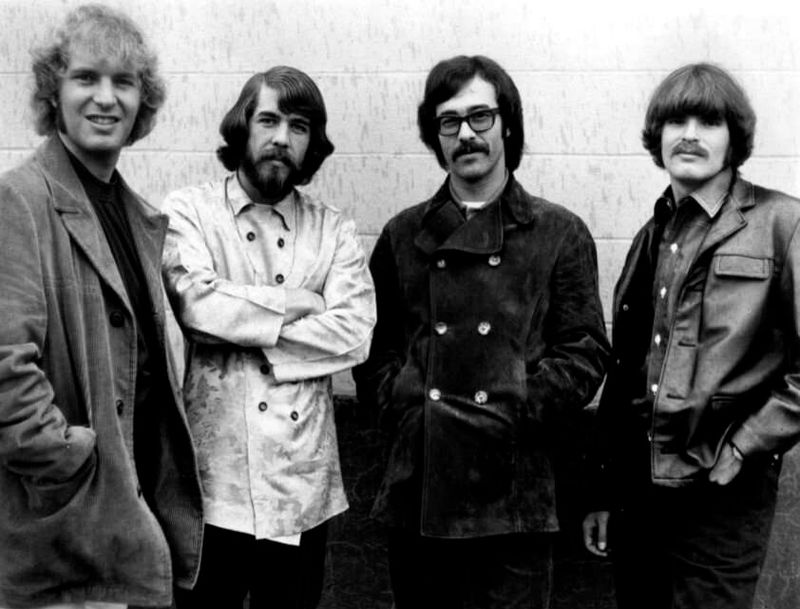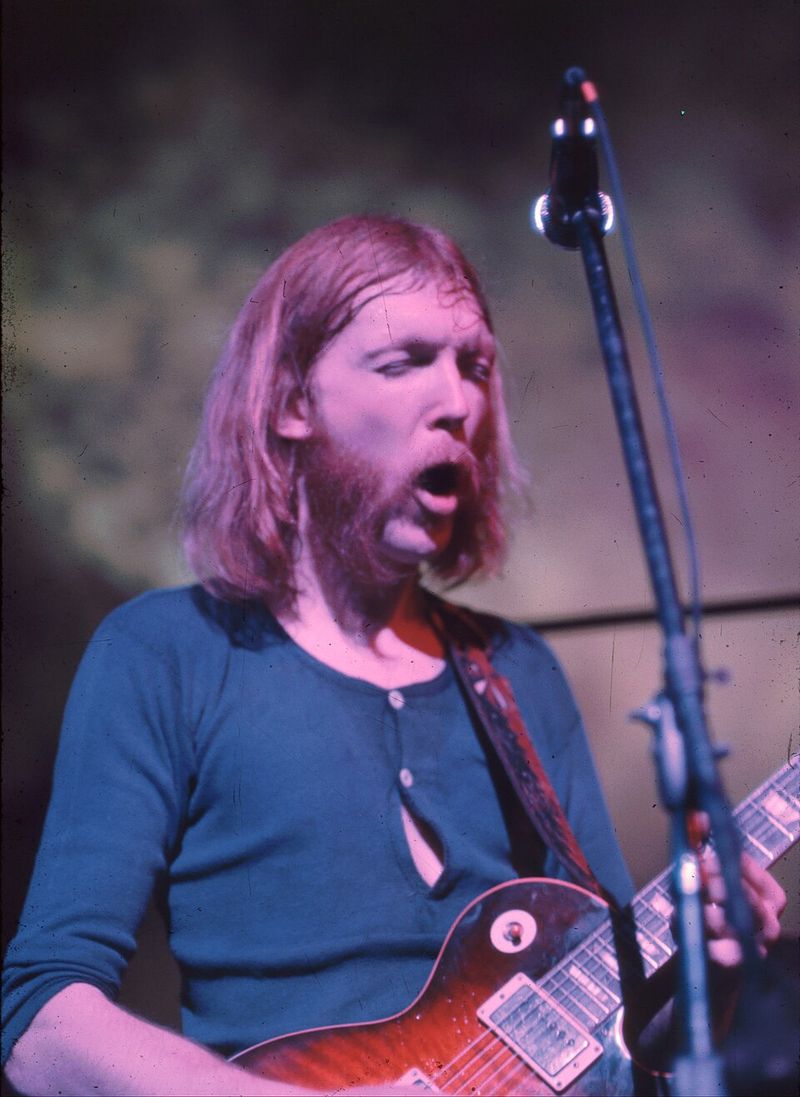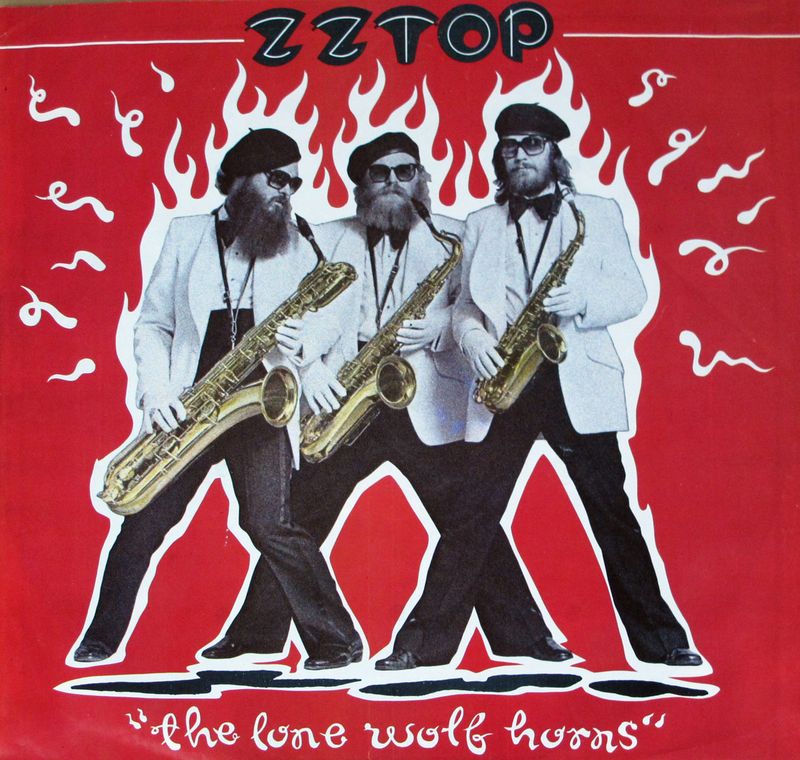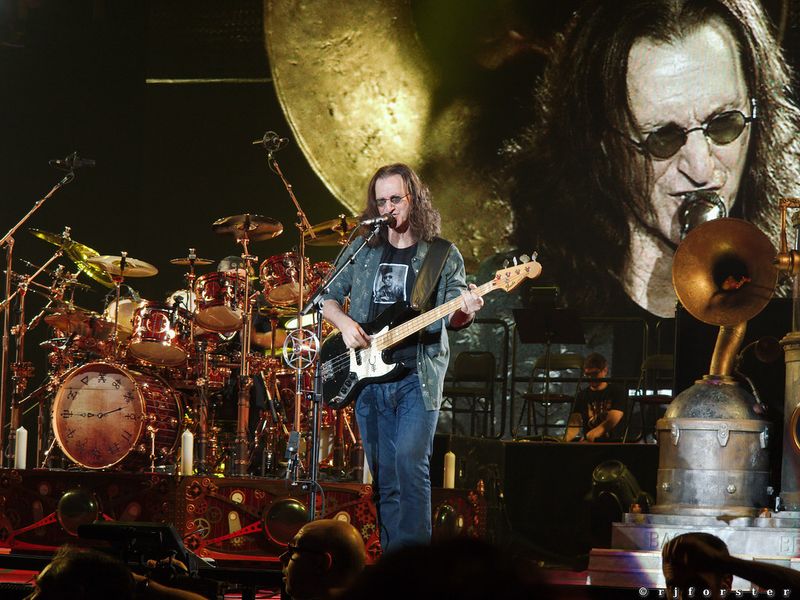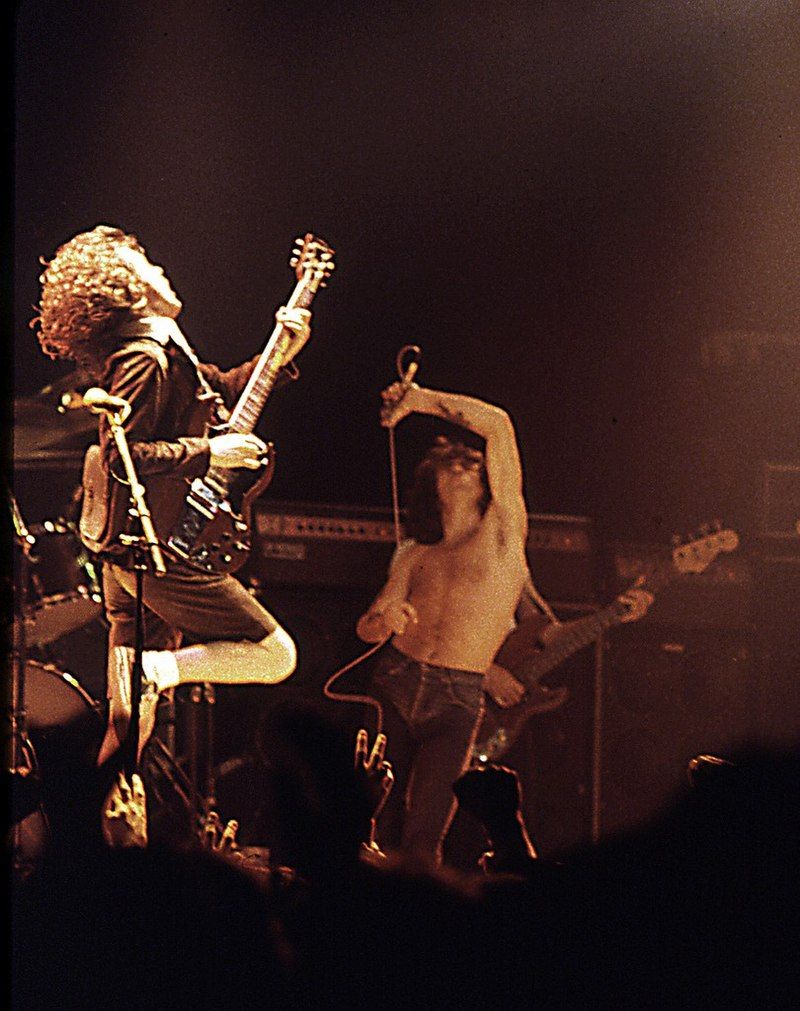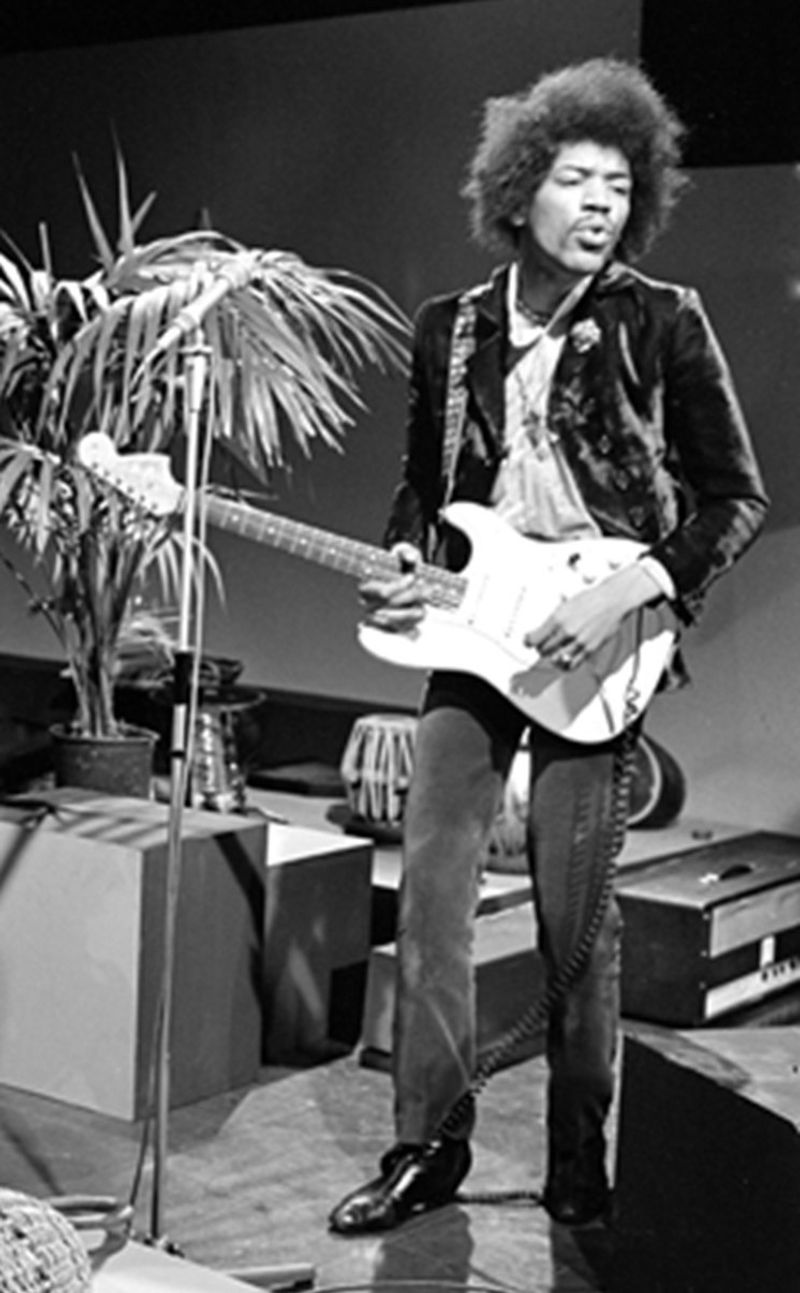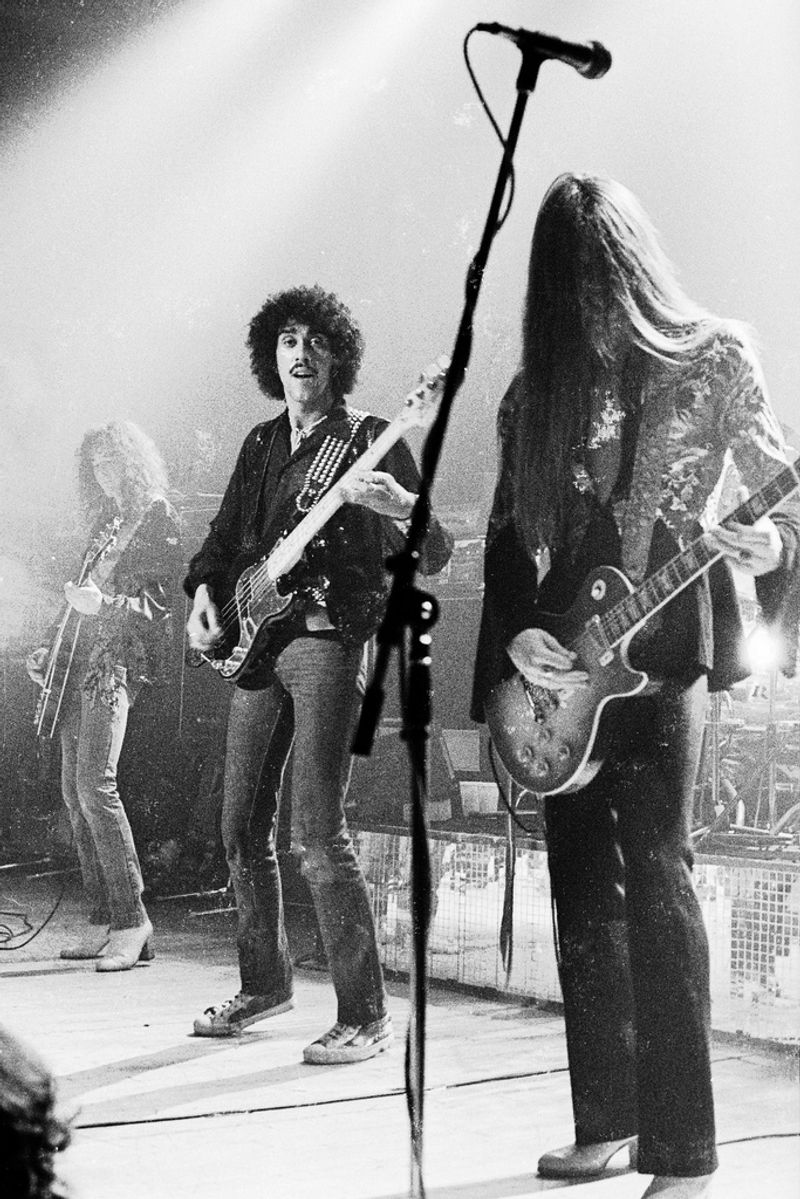Some bands don’t just play songs—they forge legends. The classic rock era gave us lineups so tight, creative, and explosive that they changed music forever. From thunderous rhythm sections to visionary guitarists and once-in-a-century vocalists, these ensembles defined what greatness sounds like. Dive in to relive the chemistry, clashes, and masterpieces that rocked the world.
Led Zeppelin
Led Zeppelin’s mythic lineup fused virtuosity and raw power into a blueprint for hard rock dominance. Jimmy Page conjured riffs and textures from wizardly guitar work, while Robert Plant’s golden, soaring voice delivered both swagger and mystique. John Paul Jones anchored and elevated everything with multi-instrumental brilliance, weaving keyboards, bass, and arrangements with compositional finesse. John Bonham’s drums thundered like avalanches, defining groove and force. Together, they melded blues grit, folk mysticism, and proto-metal weight into era-defining epics. Albums like IV and Physical Graffiti became cultural lodestones, each track a lesson in dynamics, tension, and release. Their live shows felt seismic, stretching songs into adventurous journeys. Few bands have balanced studio sorcery and stage ferocity so perfectly—or cast a shadow as enormous.
The Rolling Stones
The Rolling Stones built a lineup that felt immortal: Mick Jagger’s strut and bite, Keith Richards’s weathered riff-craft, Charlie Watts’s elegant precision, and Ronnie Wood’s glue-guitar swagger. Their resilience turned reinvention into an art form, sliding from blues grit to arena anthems without losing their sneer. Classic albums captured lightning, but onstage they were volcanic, stretching grooves into addictive, swaggering locomotion. The mid-’70s addition of Wood crystallized the band’s two-guitar weave, tough yet elastic. Watts’s heartbeat steadied the chaos, while Jagger commanded crowds like a ringmaster. Their catalog became the living dictionary of rock attitude, from sticky riffs to sly hooks. Decade after decade, the Stones set the standard for longevity and style—proof that raw spirit, discipline, and chemistry can outlast time.
Queen
Queen’s all-star lineup was a rare equilibrium of talent, ego, and imagination. Freddie Mercury’s voice and charisma could turn stadiums into living choirs, while Brian May crafted operatic guitar lines with crystalline tone. John Deacon’s basslines glided with melodic intelligence, and Roger Taylor hammered rhythmic fire while writing hits of his own. Each member composed, ensuring a kaleidoscopic catalog that vaulted from hard rock to music hall to radio opera. Their layered harmonies, studio inventiveness, and theatrical bravado rewired rock’s possibilities. Anthems like “Bohemian Rhapsody” and “We Will Rock You” became universal rituals. Onstage, Mercury soared beyond spectacle into communion. Few bands have balanced innovation and mass appeal so deftly, creating a legacy both musically towering and culturally unshakeable.
The Who
The Who’s classic lineup was a combustion engine of virtuosity and volatility. Roger Daltrey’s roar embodied heroic defiance, while Pete Townshend slashed windmill chords and stitched rock to theater with conceptual vision. John Entwistle’s bass didn’t just support; it roared lead melodies, anchoring and attacking simultaneously. Keith Moon detonated time signatures with manic, lyrical drumming that turned rhythm into spectacle. Albums like Tommy and Quadrophenia proved rock could carry narrative depth without losing bite. Live, they were incendiary—gear smashed, limits obliterated, audiences thunderstruck. Townshend’s power chords and introspection bridged punk energy and art-rock ambition. Their chemistry made risk the rule, not the exception, capturing a feral elegance that remains uniquely theirs.
Pink Floyd
Pink Floyd’s 1970s lineup engineered immersive worlds where songcraft met sonic architecture. David Gilmour’s emotive solos lifted melodies into the stratosphere, while Roger Waters’s conceptual frameworks gave albums psychological weight. Richard Wright’s atmospheric keys painted space, and Nick Mason’s patient pulse anchored long-form journeys. Together, they perfected the album-as-experience, creating The Dark Side of the Moon and Wish You Were Here—records that sound like cathedrals. Their live shows fused quad sound, film, and monumental staging into mind-expanding rituals. Tension fueled creativity, sharpening themes of alienation and industry. The result was timeless: music equally suited to headphones at midnight and arenas swollen with expectation. Their legacy remains a testament to collective precision and audacious imagination.
Fleetwood Mac (Rumours Era)
The Rumours lineup distilled chaos into crystal-pop perfection. Stevie Nicks’s mystic alto, Lindsey Buckingham’s studio wizardry, and Christine McVie’s velvet songwriting formed a golden triangle of voices and moods. John McVie’s steady bass and Mick Fleetwood’s tribal, intuitive drumming gave the songs backbone and swing. Personal turmoil became art, yielding confessionals polished to radio brilliance. Rumours remains a monument to melodic craft and emotional candor—hooks that shimmer, lyrics that cut. Live, the harmonies wrapped heartbreak in catharsis, while Buckingham’s guitar spark lit arrangements ablaze. This lineup balanced raw feeling and meticulous production, making each track feel inevitable. Decades later, the chemistry still resonates, proof that vulnerability can power a juggernaut.
Deep Purple (Mk II)
Deep Purple’s Mk II configuration forged hard rock with virtuosic heat. Ritchie Blackmore’s razor-toned riffing met Jon Lord’s Hammond organ fury, creating a twin-engine assault both classical and savage. Ian Gillan’s banshee highs sliced through the mix, while Roger Glover anchored with melodic heft and Ian Paice delivered lightning-precise drums. Together, they minted anthems like “Highway Star” and “Smoke on the Water,” showcasing speed, control, and drama. Studio prowess met stage danger, with improvisations crackling and tempos barely tamed. Their musicianship threaded the needle between blues muscle and baroque flourish, laying foundations for metal to come. Mk II didn’t just play heavy—they made it articulate, turning aggression into artful architecture.
Lynyrd Skynyrd (1970s Classic)
Lynyrd Skynyrd’s 1970s lineup built Southern rock’s fiercest wall of guitars. Ronnie Van Zant’s plainspoken authority directed stories of pride, heartbreak, and grit, while Gary Rossington and Allen Collins braided leads into soulful lightning. Leon Wilkeson and Artimus Pyle drove the groove with muscle, and Billy Powell’s piano added gospel shimmer. “Free Bird” and “Sweet Home Alabama” became anthems, but deeper cuts revealed a band equally tender and tough. Their concerts were barnburners—three-guitar harmonies shifting from burn to blaze. Tragedy truncated their ascent, yet the music’s honesty endures. Skynyrd captured place and attitude without cliché, distilling barroom sweat and Sunday-morning melody into timeless Americana.
The Eagles (Hotel California Era)
The Hotel California-era Eagles perfected sleek, harmonized rock with a Western horizon. Don Henley’s sandy tenor and Glenn Frey’s radio-ready instincts framed narratives of excess and escape. Joe Walsh turbocharged guitar textures with swagger and sting, while Don Felder’s melodic precision sharpened the band’s twin-guitar architecture. Randy Meisner’s high harmonies and tuneful bass completed a pristine engine. The title track’s cinematic solos became lore, but the album breathes with meticulous craft across every arrangement. Their blend of country, rock, and Californian polish turned introspection into widescreen spectacle. Live, vocal stacks rang like cathedral bells. It’s the moment where precision met mystique, capturing a golden-hour glow that still illuminates FM airwaves worldwide.
Aerosmith
Aerosmith’s classic five forged American hard rock with streetwise blues and skyscraper hooks. Steven Tyler’s elastic howl and runway presence met Joe Perry’s serrated riffs in a combustible partnership. Brad Whitford’s understated precision, Tom Hamilton’s melodic bass, and Joey Kramer’s punchy groove made the machine roar. From “Dream On” to “Sweet Emotion,” they delivered swagger tight enough for radio and raw enough for arenas. Their chemistry bristled—volatile offstage, volcanic on it—turning each performance into a strut and a sprint. They weathered storms to reignite, proving grit can regenerate glamour. In the pantheon of riff-slinging juggernauts, Aerosmith remains both quintessential and uniquely American.
Creedence Clearwater Revival (CCR)
CCR’s short, blazing run produced a jukebox of American essentials. John Fogerty’s gritty tenor and telegraph-precise songwriting fired off timeless hooks and populist storytelling. Tom Fogerty’s rhythm guitar locked the groove, while Stu Cook and Doug Clifford hammered a swampy, locomotive pocket. In a few miraculous years, they delivered “Fortunate Son,” “Bad Moon Rising,” and a stack of hits that felt inevitable. The sound was lean—no bloat, just bite and atmosphere—evoking bayous and backroads with cinematic immediacy. Internal tensions cut the arc short, but the catalog’s impact only grew. CCR distilled rock, country, and R&B into pure, roaring clarity that still rattles windows and raises fists.
The Doors
The Doors refined rock into ritual, conjuring mystery with minimal means. Jim Morrison’s baritone poetry walked the edge between prophet and provocateur, while Ray Manzarek’s keyboards built hypnotic cathedrals in the absence of bass. Robby Krieger’s fluid, flamenco-tinged guitar melodies wound like smoke, and John Densmore’s jazz instincts made grooves breathe and coil. Together, they fused blues, psychedelia, and noir atmosphere into something singular. Concerts hovered between ceremony and chaos, danger palpable. Their albums feel like soundtracks to dreamscapes—seductive, unsettling, unforgettable. Even after Morrison’s brief, blazing arc, their influence endures, forever whispering from the margins of the mainstream.
The Allman Brothers Band (Duane Era)
The Duane-era Allman Brothers fused blues depth with jazz freedom, birthing the jam-band template. Duane’s slide guitar cried and soared, a voice within a voice, while Gregg’s Hammond and husky vocals anchored the soul. Dickey Betts’s lyrical leads intertwined with Duane’s in telepathic harmony. Berry Oakley’s melodic bass and the dual-drum engine of Butch Trucks and Jaimoe created rolling thunder. At Fillmore East remains a summit of live improvisation—songs stretching, never sagging, each turn revealing new light. Tragedy struck early, yet their blueprint shaped generations. They made extended interplay feel essential, not indulgent, channeling the South’s ache and triumph into endless, sunlit motion.
ZZ Top (Classic Trio)
ZZ Top’s classic trio proved three players can sound like a convoy. Billy Gibbons’s chewy, overdriven tone delivered riffs with a wink and a snarl, while Dusty Hill’s bass glued the groove with barroom heft. Frank Beard’s drumming snapped like a trap, keeping the boogie lean and mean. Their aesthetic—beards, shades, hot rods—framed a sound equal parts juke joint and jet engine. From “La Grange” to 1980s synth-sheened hits, they evolved without losing grit. Decades of near-unbroken lineup continuity forged telepathic timing and undeniable cool. It’s minimalism with maximum flavor.
Rush
Rush’s legendary trio alchemized technical mastery into emotional grandeur. Neil Peart’s polyrhythmic command and literary lyrics set a cerebral foundation, while Geddy Lee’s soaring voice and agile bass stitched melody to momentum. Alex Lifeson colored the edges with chiming textures and seismic solos, expanding sonic space without clutter. Together, they evolved from hard-prog fireworks to textured, new-wave shimmer, always precise yet adventurous. Their tours were clinics in execution, each member a linchpin. Fans connected not just with virtuosity, but with the band’s integrity—three lifers pushing forward, album after album. Rush made complexity feel anthemic, turning odd meters into fist-raising moments.
AC/DC (Bon Scott Era)
The Bon Scott era of AC/DC captured rock at its most elemental: loud, lean, and lethal. Bon’s raspy charm and devil-may-care delivery danced over Angus Young’s chainsaw riffs and electric showmanship. Malcolm Young’s granite rhythm guitar locked with Cliff Williams and Phil Rudd, forging an unshakeable, head-bobbing engine. These songs didn’t meander—they hit, grinned, and hit harder. Albums like Highway to Hell bottled barroom electricity with radio clarity. Live, they were unstoppable, turning minimalism into maximum voltage. The chemistry felt bulletproof, the attitude contagious. It’s the sound of pure rock distilled to its knockout punch.
Black Sabbath (Ozzy Era)
Black Sabbath’s Ozzy-era lineup invented heavy metal with monolithic riffs and apocalyptic mood. Tony Iommi’s down-tuned guitar carved granite slabs, while Geezer Butler’s bass wrote counter-melodies steeped in dread. Bill Ward’s drumming swung like a hammer, and Ozzy’s haunted timbre floated eerily above the crush. Together, they forged a new emotional palette—fear, awe, and catharsis—on albums that became scripture. The simplicity was deceptive; grooves lurched and stalked, dynamics rose like storm fronts. Their influence radiates across metal’s every subgenre. It started here: four musicians translating darkness into unforgettable sound.
The Jimi Hendrix Experience
The Jimi Hendrix Experience detonated rock’s possibilities in a dazzling flash. Hendrix painted with feedback, wah, and studio sorcery, transforming the guitar into a universe. Mitch Mitchell’s jazz-inflected drumming danced and darted, while Noel Redding’s bass held the center as songs spiraled outward. Are You Experienced and Electric Ladyland reframed the album as an exploratory canvas—psychedelia with blues blood and celestial reach. Onstage, Hendrix fused ferocity and tenderness, summoning tones fans hadn’t imagined. The trio’s chemistry allowed explosive improvisation without fraying. Even brief, their run remains a north star for innovation.
The Grateful Dead (Classic 1970s)
The Grateful Dead’s classic 1970s roster turned concerts into living ecosystems. Jerry Garcia’s lyrical leads and generous spirit guided improvisations that felt communal, not flashy. Bob Weir’s angular rhythms and Phil Lesh’s adventurous bass rewrote the rulebook on accompaniment. Bill Kreutzmann and Mickey Hart’s twin drums created ritualistic pulse, while Keith Godchaux’s piano added jazz-laced sparkle. Songs were launchpads; no two nights the same. They braided folk, blues, country, and psychedelia into a distinctly American tapestry. Loyal Deadheads followed the journey, recording, trading, and evolving with the band. The legacy: an improvisational ethos that still breathes through modern jam scenes.
Thin Lizzy
Thin Lizzy’s classic twin-guitar formation gave hard rock melodic wings. Phil Lynott’s poetic street romanticism and charismatic bass-frontman stance anchored songs that swaggered and sighed in equal measure. Scott Gorham and Brian Robertson (later Gary Moore) interwove harmonized leads with razor clarity, turning riffs into anthemic calls. The band’s Celtic lilt colored narratives of outlaws and lovers, while the rhythm section packed punch and grace. “The Boys Are Back in Town” broke big, but albums like Jailbreak revealed deeper craftsmanship. Live, they were tight, luminous, and electric—proof that twin leads could be muscle and melody. Lizzy bridged grit and elegance in a way few have matched.
